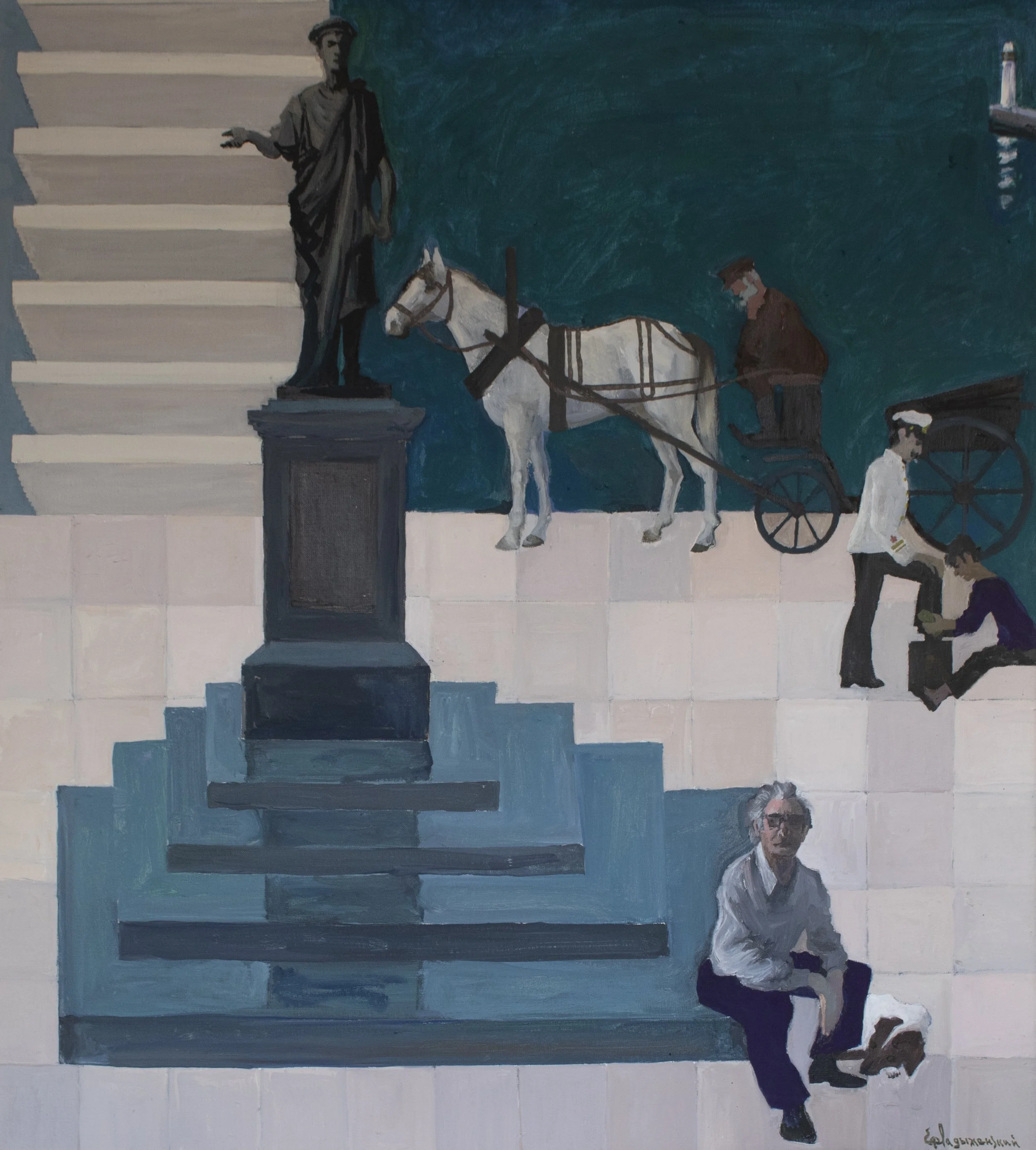Yefim Ladyzhensky
Yefim Ladyzhensky, The Past is Always With Me III. 1979-1981. Collection of the artist’s family.
Born in Odessa in 1911, Yefim Ladyzhensky was the son of a fish salter. He studied at the theater department of the Odessa Art College before leaving Odessa for Moscow in 1931. Throughout the 1930s he worked as a stage designer for various theaters and films. From 1949 to 1956 he lived in Siberia, where he continued to work as an artist, and upon his return to Moscow, he began painting works in series, which he worked on concurrently. He began his Growing Up in Odessa series in the 1960s.
In 1939 he joined the Union of Soviet Artists, and, as a state-supported artist, much of his work was exhibited in the Soviet Union. However, like many such artists, some of his output was unsanctioned by the Soviet state; government authorities would not exhibit work with themes which they perceived as critical of the Soviet Union– including Ladyzhensky’s images of the Odessa of his youth.
In 1978, hoping to achieve recognition for the work that the Soviet state had suppressed, Ladyzhensky immigrated to Israel and joined his daughter in Jerusalem. But he faced exorbitant customs duties on his artwork which belonged to the state, so he destroyed hundreds of works of art before leaving the Soviet Union.
In Israel, he continued to paint his memories of Odessa. He was granted a major retrospective of his works at the Israel Museum in Jerusalem in 1979, and a show at the University of Haifa Art Gallery in 1980. Nonetheless, Ladyzhensky was dismayed and bewildered at what he perceived as inadequate recognition, notoriety, and success. He could not comprehend either the capitalist art market, or the cultural relevance of painters in Israeli society.
Shortly before his death by suicide in 1982, and with the help of his daughter Victoria, he began writing and dictating stories to accompany his paintings.

